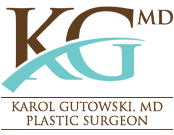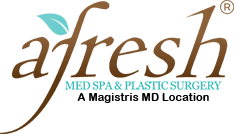Breast enhancement is one of the most common aesthetic procedures done today. Learn more about what to expect before you meet our surgeons in person.
TRANSCRIPTION
Breast size is important to many women. A woman with small breasts, or whose breast size has diminished, may desire an increase in the projection and fullness of the breasts, to improve the balance in her figure and to enhance self-image and confidence.
Breast augmentation is plastic surgery that increases breast size and enhances breast shape through the surgical placement of breast implants. In many cases, women who undergo breast augmentation do so to enhance small breast size or to restore breast volume that can diminish following pregnancy or weight loss.
However, breast augmentation does not correct sagging breasts. Breast augmentation can also achieve symmetry in breasts that are moderately disproportionate, or with a difference in size.
This program presents an overview of breast augmentation, the surgical placement of breast implants. It is not a substitute for a complete consultation with a plastic surgeon certified by the American Board of Plastic Surgery, or The Royal College of Physicians and Surgeons of Canada.
Breast augmentation is a highly individualized procedure. Permanent breast enhancement can only be achieved surgically. There is currently no medical treatment of any kind for breast enhancement with the proven results and satisfaction of breast augmentation.
Adult women of any age make good candidates for breast augmentation, however, it is recommended that a woman breasts be fully developed prior to breast augmentation.
Good candidates for breast augmentation are also healthy individuals who do not have life-threatening illnesses or medical conditions that can impair healing. Breast augmentation can be performed in conjunction with a breast lift, to improve the position and shape of sagging breasts, in addition to enhancing breast size.
A consultation with a board certified plastic surgeon, a member of the American Society of Plastic Surgeons, who may also be a member of the American Society for Aesthetic Plastic Surgery, is the first step to learn how breast augmentation can enhance breast appearance and improve your body image. The consultation is designed to fully educate you about breast augmentation with a discussion of your goals, the options available in breast augmentation surgery, the likely outcomes of breast augmentation surgery, and any potential risks and complications.
Your surgeon will also describe the course of treatment recommended for you, and answer your questions.
During a consultation, you will be asked to share your expectations for breast augmentation and your personal health history. Full disclosure of your health history is important to your safety. This includes any history of breast cancer in your family and your personal breast health.
You must also be candid about current medications you may be taking, the use of vitamins and herbal supplements, and alcohol, tobacco, and drug use.
By making the decision to consult with a board certified plastic surgeon, and following all of the instructions you are given, you are taking an important step in helping to assure your safety. A board-certified plastic surgeon is a physician who is specifically trained in plastic surgery of the face and the entire body.
Prior to your procedure, you will be asked to sign Informed Consent documents. These documents ensure your plastic surgeon that you fully understand the procedure you will undergo, and potential risks and complications. In addition, you must commit to precisely following all of the instructions you are given.
Instructions include pre-surgical considerations such as testing and medications, day of surgery instructions and medications, and specific information related to use of anesthesia.
A mammogram may be recommended prior to your procedure to ensure breast health and serve as a baseline for future comparison.
Breast augmentation is generally performed on an out-patient basis in an office-based surgical facility, an ambulatory surgical center or hospital setting.
Members of the American Society of Plastic Surgeons and the American Society for Aesthetic Plastic Surgery are required to use only accredited surgical facilities.
Local anesthesia with sedation or general anesthesia is required.
Breast augmentation enhances breast size and shape by surgical placing a breast implant into the body through an Inframmary incision near the breast crease, through a Periareolar incision at the edge of the pigmented skin surrounding the nipple, or through an axillary incision in the underarm area.
Incision patterns vary based on the type of implant, degree of enlargement desired, patient anatomy and patient and surgeon preference.
Through the incision, a pocket is created in which to place the breast implant. This pocket is located either directly behind the breast tissue, called Submammary or Subglandular placement, or beneath the pectoral muscle and on top of the chest wall, called Submuscular placement.
Once the implant is positioned, incisions are closed with layered absorbable sutures in the breast tissue, and with sutures, skin adhesives or surgical tape closing the incision on the skin surface.
A breast implant is a medical device. A medical grade bio-compatible textured or smooth silicone shell filled with sterile saline solution.
Should the implant rupture or leak, the saline is safely absorbed by the body. Implants may be prefilled prior to placement, or slowly filled at the time of surgery through a self-sealing valve. Implant type, placement and size, and the incision pattern used in breast augmentation will be determined based on your breast anatomy and body type, your desired enhancement and breast size, and your plastic surgeon’s surgical judgment.
Implant manufacturers occasionally introduce new style and shapes of implants, there may be additional options available to you.
Saline-filled breast implants are medical devices approved by the US Food and Drug Administration for safety. Careful review of scientific research by independent groups, such as the National Academy of Sciences Institutes of Medicine, have found no proven link between breast implants and autoimmune or other systemic diseases in women.
In addition, breast augmentation with breast implants does not generally interfere with a woman’s ability to breastfeed. In general, complications from plastic surgery of the breast include bleeding, poor healing at the incision sites, this discolored or raised scars, changes in nipple sensation and infection. Women that smoke are at increased risk of poor healing, and are therefore advised to stop smoking for several weeks before and after surgery.
In addition, breast augmentation may result in visible wrinkling of the skin over the implant, or the development of a condition Capsular Contracture.
Capsular Contracture causes the naturally forming scar tissue around a breast implant to contract. This occurs in a variable percentage of patients and can make the breast feel firmer than normal. The condition can be addressed, and sometimes requires revisional surgery, although correction is not always permanent.
You should also understand that breast implants are not guaranteed to be lifetime devices. Implants can leak or rupture, and future surgery will likely be required to replace one or both implants.
Immediately following your breast augmentation surgery, dressings or bandages may be applied to your incisions, and an elastic bandage or support bra will minimize swelling and support the breasts as they heal.
Before being released, you and an accompanying family member, friend, or caregiver will be given specific instructions that may include how to care for the breasts following surgery, medications to apply or take orally to aid healing and reduce the risk of infection, specific changes to watch for at the surgical site or in overall health, and when to follow up with your plastic surgeon.
You will also be given specific information identifying the manufacturer, style and serial number of the breast implants placed during your breast augmentation for your record. And as part of the breast implant manufacturers warranty.
In general, your recovery from plastic surgery of the breasts may include swelling and discomfort at the incision sites and in breast tissue overall, discomfort is common and can be controlled with medication. You should begin light walking as soon as possible following your breast surgery. In addition, a support bra may be recommended for the first week or two following breast surgery.
Initial wound healing may take one to two weeks, at which time sutures will be removed if necessary. The initial results of breast augmentation are visible immediately. You should be ready to return to work or normal activity within a week following breast augmentation if you feel ready.
But do not engage in any heavy lifting or vigorous exercise until your plastic surgeon gives you clearance to do so. Intimate contact with the breasts and more vigorous exercise may resume when healing is more fully completed. Usually within four to six weeks following breast augmentation surgery.
Healing will continue for several weeks as swelling resolves and the implant settles. Your incision lines will continue to fade over the next year or more. Even though incisions are placed inconspicuously, incision lines will result in permanent scars.
Breast augmentation is a highly satisfying plastic surgery procedure, to enhance the size and shape of a woman’s breasts. While the results generally are permanent, your breasts can change due to aging, weight fluctuations, hormonal factors, and gravity. Your new enhanced breast size and body contour will give you the confidence and freedom to wear certain clothing styles without the need for padded bras and bring added self-confidence, whether at the beach or in the board room.
Choosing to undergo breast augmentation or any plastic surgery procedure, whether cosmetic or reconstructive, is an important decision. So is selecting a plastic surgeon. The American Society of Plastic Surgeons and the American Society for Aesthetic Plastic Surgery have prepared this educational program to supplement your personal consultation with a plastic surgeon who is certified by the American Board of Plastic Surgery or the Royal College of Physicians and Surgeons of Canada.
Plastic surgeons with this certification have completed approved surgical training and rigorous examinations in plastic surgery, including both cosmetic and reconstructive procedures of the face and entire body.









